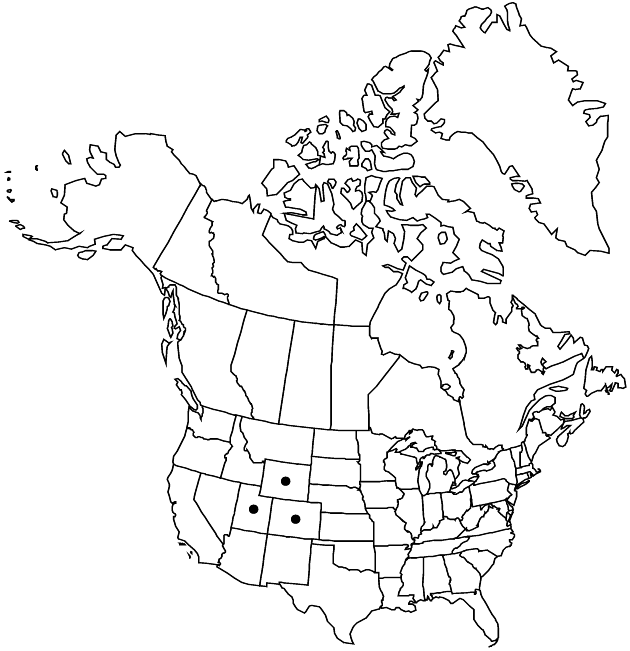Pyrrocoma clementis var. clementis
Treatment appears in FNA Volume 20. Treatment on page 416.
Plants 6–18 (–40) cm. Stems decumbent to ascending. Leaves narrowly lanceolate, 50–140 × 9–16 mm, margins entire or slightly undulate. Involucres 20–34 mm wide. Phyllaries narrowly obovate, apices abruptly acute. Cypsela faces sericeous. 2n = 12.
Phenology: Flowering Jun–Sep.
Habitat: Meadows, open rocky slopes, limestone outcrops in shrub communities
Elevation: 2500–3800 m
Distribution

Colo., Utah, Wyo.
Discussion
R. A. Mayes (1976) suggested a relationship between var. clementis and Pyrrocoma crocea.
Selected References
None.
Lower Taxa
None.
"[" is not declared as a valid unit of measurement for this property."[" is not declared as a valid unit of measurement for this property.
... more about "Pyrrocoma clementis var. clementis"
introrse +
connate +
distinct +
herbaceous +
acute +
scarious +
green +
distinct +
hirsute +
papillate +
continuous +
1-nerved +
oblanceolate +
petiolate +
clasping +
auriculate +
3mm;30mm +
lanceolate;narrowly oblanceolate +
ribbed +
stigmatic +
brownish +
persistent +
15;60 +
unequal +
absent +
lanceolate +
reduced +
sessile +
yellow +
absent +
10-12-nerved +
sericeous +
dimorphic +
4mm;7mm +
staminate +
straight +
eglandular +
distinct +
proximal +
1;5 +
bisexual +
dispersed +
singly +
indeterminate +
2;5 +
surrounding +
campanulate +
alternate +
lanceolate +
erect +
deltate +
white +
2-carpellate +
inferior +
attached +
anatropous +
tawny +
persistent +
tough +
thick +
absent +
connate +
1-nerved +
persistent +
distinct +
herbaceous +
falling +
proximal +
obovate +
unequal +
equal +
Bull. Torrey Bot. Club +
1900 +
pistillate +
absent +
fertile +
epaleate +
pitted +
convex +
fibrous +
exalbuminous +
modifed +
3;4 +
Endemic +
alternate +
simple +
pale and often red-tinged +
triangular +
2-branched +
glabrous +
Pyrrocoma clementis var. clementis +
Pyrrocoma clementis +
variety +
singly +
smaller +
tubular-funnelform +
equaling +
sessile +
perennial +